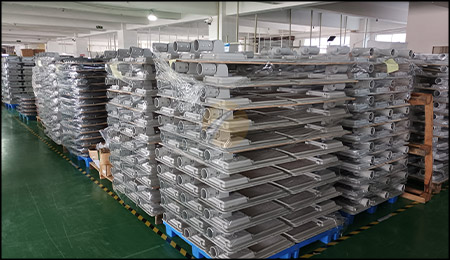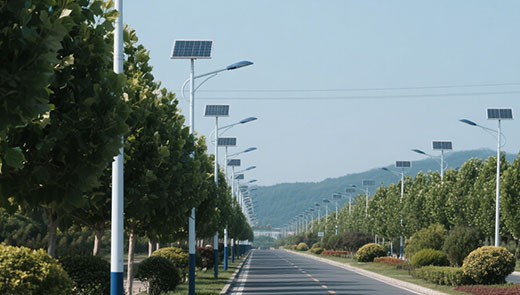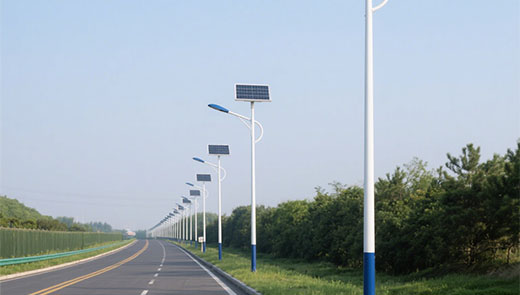Illuminating Pathways: The Intricate Production Journey of Solar Street Lights
Jan 08, 2024
Solar street lights heralded as champions of sustainable urban lighting, undergo a meticulous production process that seamlessly merges technological innovation with environmental consciousness. As cities worldwide embrace renewable energy solutions, understanding the intricate steps involved in the production of solar streetlights becomes crucial. This article delves into the fascinating journey these lights take from conception to installation, shedding light on the eco-friendly manufacturing practices that contribute to a brighter and greener future.
Design and Component Selection
The production journey of solar led street light begins with meticulous design planning. Engineers and designers work together to create efficient, durable, and aesthetically pleasing structures. Component selection is a critical phase, where high-quality solar panels, energy-efficient LED lights, durable batteries, and smart controllers are chosen. The design ensures optimal integration of these components, maximizing energy capture during the day and efficient illumination at night. Solar Panel Manufacturing
Solar Panel Manufacturing
The heart of any solar street lights outdoor lies in its solar panel. The production process for solar panels involves the assembly of photovoltaic cells, encapsulation in weather-resistant materials, and the addition of an anti-reflective coating. Advanced manufacturing technologies ensure that solar panels can efficiently convert sunlight into electricity, powering street lights with sustainable energy. Battery and Controller Integration
Battery and Controller Integration
Assembled solar panels are integrated with high-capacity rechargeable batteries and intelligent controllers. The batteries, usually lithium-ion or lead-acid, store the harvested solar energy during the day, ensuring a continuous power supply for the LED lights during the night. Smart controllers manage energy flow, adjusting lighting intensity based on ambient conditions and optimizing overall system performance.
LED Light Manufacturing
The LED lights used in solar road lights undergo a precise manufacturing process. Highly efficient and long-lasting LED bulbs are selected for their luminosity and low energy consumption. These lights are then integrated into weather-resistant fixtures designed to withstand diverse environmental conditions, ensuring reliability and longevity in the field. Final Assembly and Quality Checks
Final Assembly and Quality Checks
In the final stages of production, all components come together in a meticulous assembly process. The solar panels, batteries, controllers, and LED lights are integrated into the street light housing. Quality checks are conducted to ensure that each unit meets the highest standards for performance, durability, and safety. The finished led solar street lamp are then ready for deployment, illuminating urban streets and pathways with clean, renewable energy.
The production process of solar streetlights is a testament to the harmonious synergy of technology and sustainability. From the careful selection of components to the integration of cutting-edge solar technology, every step in this journey contributes to creating eco-friendly lighting solutions that pave the way for a greener and more energy-efficient urban future.
Design and Component Selection
The production journey of solar led street light begins with meticulous design planning. Engineers and designers work together to create efficient, durable, and aesthetically pleasing structures. Component selection is a critical phase, where high-quality solar panels, energy-efficient LED lights, durable batteries, and smart controllers are chosen. The design ensures optimal integration of these components, maximizing energy capture during the day and efficient illumination at night.

The heart of any solar street lights outdoor lies in its solar panel. The production process for solar panels involves the assembly of photovoltaic cells, encapsulation in weather-resistant materials, and the addition of an anti-reflective coating. Advanced manufacturing technologies ensure that solar panels can efficiently convert sunlight into electricity, powering street lights with sustainable energy.

Assembled solar panels are integrated with high-capacity rechargeable batteries and intelligent controllers. The batteries, usually lithium-ion or lead-acid, store the harvested solar energy during the day, ensuring a continuous power supply for the LED lights during the night. Smart controllers manage energy flow, adjusting lighting intensity based on ambient conditions and optimizing overall system performance.
LED Light Manufacturing
The LED lights used in solar road lights undergo a precise manufacturing process. Highly efficient and long-lasting LED bulbs are selected for their luminosity and low energy consumption. These lights are then integrated into weather-resistant fixtures designed to withstand diverse environmental conditions, ensuring reliability and longevity in the field.

In the final stages of production, all components come together in a meticulous assembly process. The solar panels, batteries, controllers, and LED lights are integrated into the street light housing. Quality checks are conducted to ensure that each unit meets the highest standards for performance, durability, and safety. The finished led solar street lamp are then ready for deployment, illuminating urban streets and pathways with clean, renewable energy.
The production process of solar streetlights is a testament to the harmonious synergy of technology and sustainability. From the careful selection of components to the integration of cutting-edge solar technology, every step in this journey contributes to creating eco-friendly lighting solutions that pave the way for a greener and more energy-efficient urban future.




